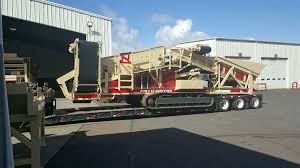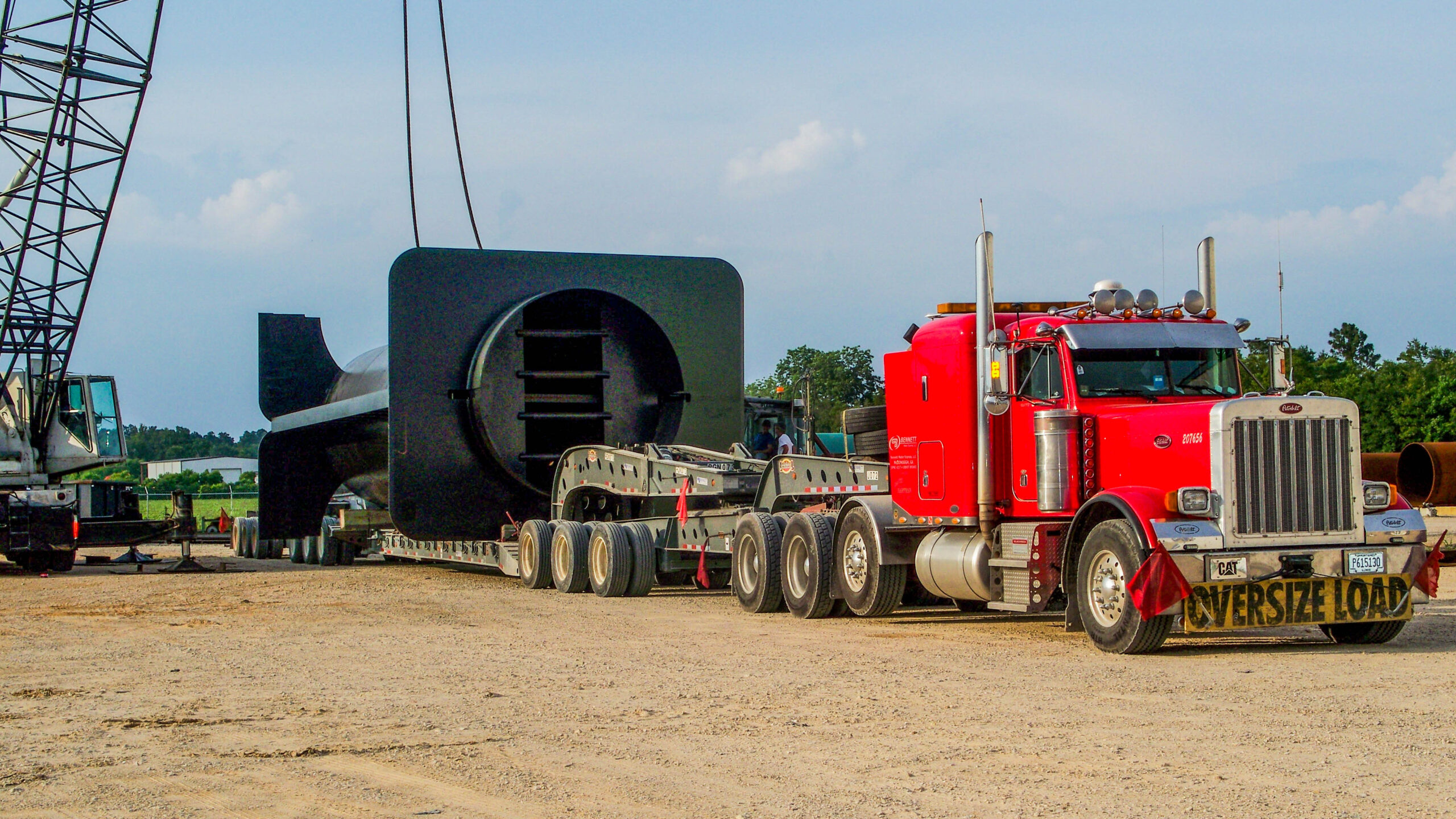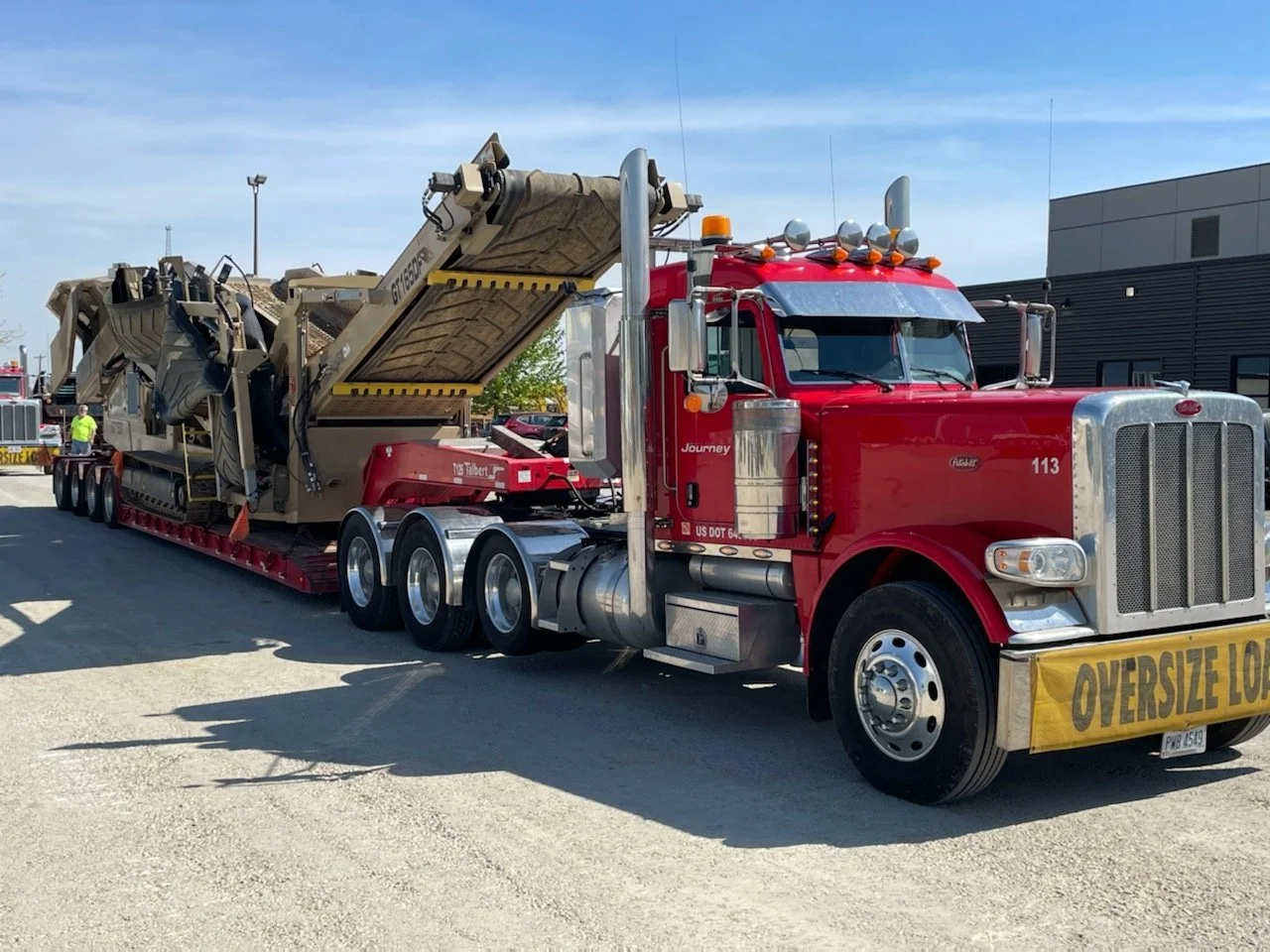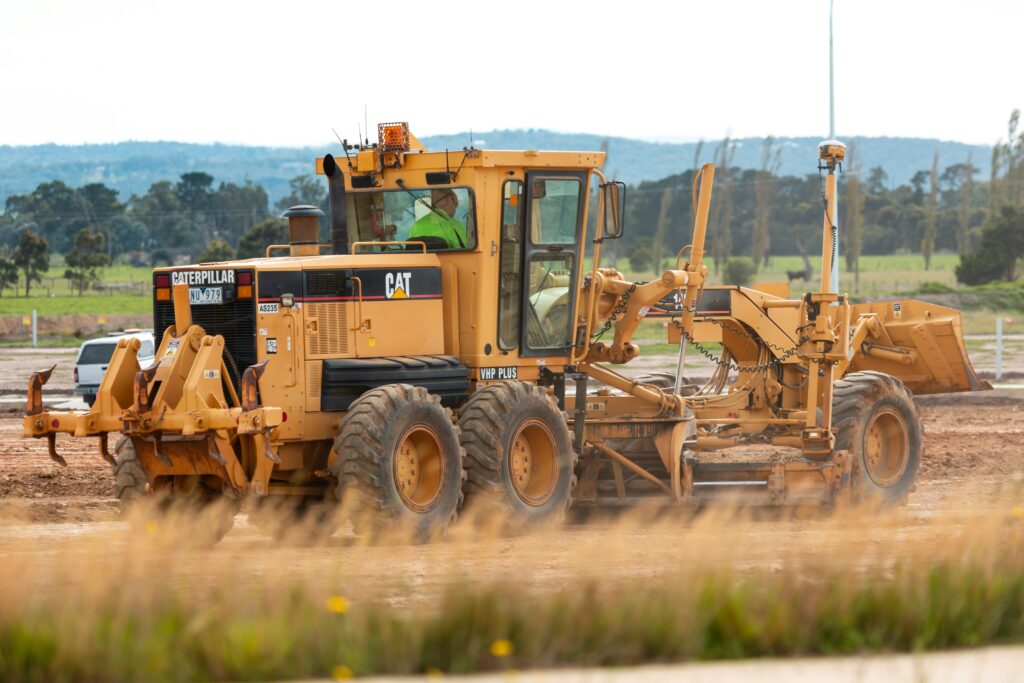Reliable Heavy Equipment Transport Services for Your Biggest Projects
Heavy Equipment Transports delivers safe, on-time hauling you can count on. Our experienced team handles your machinery with care to ensure every load reaches its destination without delay or damage.

Experience Reliable Heavy Hauling
Our skilled team delivers heavy equipment with safety, punctuality, and expert care.
Secure Equipment Handling
Safety is our top priority, using industry-leading methods to ensure your machinery stays protected throughout transport.
Timely Deliveries
We manage schedules precisely to maintain your project timelines and avoid costly delays.
Industry Expertise
Extensive experience in construction, mining, and agriculture allows us to tailor hauling plans specifically for your equipment.
Our Heavy Equipment Transport Services
Dependable solutions tailored to move your heavy machinery safely and on schedule.
Heavy Machinery Transport
Specialized hauling tailored to move your equipment securely and efficiently.
Oversized Load Management
Customized handling solutions to ensure smooth transit of large-scale equipment.
Construction Equipment Delivery
Reliable transport services designed to meet strict industry standards and deadlines.
Our Process
Dedicated to making every heavy haul predictable, secure, and hassle-free.
Step One: Schedule Your Transport
Provide your equipment details and preferred timeline so we can create a custom hauling plan suited to your needs.
Step Two: Secure Loading
Our experienced team carefully loads and secures your machinery using the right trailers and industry-approved tie-downs to prevent damage.
Step Three: Timely Delivery
We transport your equipment with precision and keep you updated throughout the journey, ensuring it arrives safely and on schedule.
Transporting Heavy Equipment
Transporting Heavy Equipment Transport across the U.S., Canada, and Mexico demands efficient and reliable hauling solutions to keep your operations running smoothly with expert logistics. Whether you’re overseeing a construction project or relocating industrial machinery, grasping the shipping process for oversized load shipping is essential.
This guide aims to walk you through the intricacies of equipment shipping, covering aspects such as pilot cars, loading assistance, and the role of dedicated transport specialists, from acquiring necessary permits from DOT and FMCSA to understanding cost factors and seeking transparent shipping quotes. With the right insights, you’ll be equipped to make informed decisions tailored to your heavy hauling requirements, including custom shipping solutions and affordable rates.
Dive into this comprehensive overview of transport solutions to ensure your projects proceed without a hitch, while maximizing efficiency and minimizing costs. Discover how knowledge about permits, logistics, and pricing can streamline your operations and achieve safe delivery.
Key Takeaways: Explore bulk shipping solutions and machinery transport strategies for seamless process handling.heavy equipment transports involves transporting large and heavy machinery from one location to another using specialized hauling services.Professional heavy hauling services offer benefits such as expert handling, safe transportation, quality service, and compliance with regulations and permits.When choosing a heavy hauling service provider, consider factors such as cost, safety measures, and experience with challenging terrains and oversized loads.
What is Heavy Equipment Transport, and what does it involve?
Heavy Equipment Transport pertains to the specialized transportation of large machinery and vehicles across the U.S., Canada, and Mexico, which necessitates meticulous logistics and planning to ensure safe delivery across diverse terrains and jurisdictions.
Commonly transported machinery includes the International 260A backhoe and the CMI RS500B paver. Each type of equipment requires careful handling; for instance, the CMI RS500B, which weighs over 25,000 pounds, necessitates the use of a lowboy trailer for secure transport.
It is imperative to engage experienced operators who are knowledgeable about relevant regulations and terrain challenges to mitigate the risk of accidents. The utilization of tracking tools, such as GPS Fleet Management, allows for real-time updates during transit, facilitating prompt adjustments as necessary.
Additionally, securing the appropriate permits is essential to avoid legal complications throughout the hauling process.
What types of heavy equipment can be transported using heavy hauling services?
Heavy hauling services are equipped to transport a wide range of heavy equipment, including construction machinery, agricultural vehicles, and specialized industrial tools, providing expert handling and transport solutions.
The following are some of the types of equipment typically transported:
- Forklifts (3,000-10,000 lbs): Utilized for lifting and moving materials within warehouses, as seen in U.S. logistics operations.
- Excavators (15,000-100,000 lbs): Ideal for tasks such as digging and grading at construction sites, reflecting the quality service in machinery transport.
- Bulldozers (25,000-70,000 lbs): Effective for pushing earth and clearing debris.
- Cranes (10,000-200,000 lbs): Essential for lifting heavy materials to various heights.
- Backhoes (9,000-20,000 lbs): Versatile machinery suitable for digging and loading.
- Dump Trucks (15,000-30,000 lbs): Employed for transporting loose materials such as sand and gravel.
- Compact Track Loaders (6,000-10,000 lbs): Designed for efficient maneuvering in confined spaces while lifting.
- Pavers (15,000-25,000 lbs): Specialized equipment for laying asphalt on roadways.
Selecting the appropriate hauling service is contingent upon the weight and dimensions of the equipment to be transported.
How much does heavy equipment transports typically cost?
The cost of heavy equipment transports varies significantly based on several factors, typically ranging from $1,000 to $10,000 per load, depending on the distance and specifications of the equipment, including international equipment shipping considerations.
To delineate these costs, three primary factors must be considered:
- Distance
- Type of equipment
- Additional services
For instance, transporting a standard excavator over a distance of 200 miles may incur a cost of approximately $2,500, whereas relocating a larger crane could result in expenses exceeding $6,000. Additionally, services such as loading assistance may contribute an extra $300 to $600 to the overall cost.
To facilitate cost calculations, individuals may utilize an online cost estimator specifically designed for hauling, allowing them to input factors such as distance and equipment type to receive a preliminary quote tailored to their project requirements.
What factors influence the pricing of heavy hauling services?
Several key factors influence the pricing of heavy hauling services, including the size and weight of the equipment, the distance to the destination, and the specific logistical challenges and unique challenges involved.
Additional important considerations include load size and route complexity. For example, heavier loads typically incur higher fees, with costs increasing significantly for weights exceeding 100,000 pounds. Additionally, the complexity of the route can impact pricing; routes that require special permits or pilot vehicles to navigate obstacles such as low bridges or tight turns may incur additional costs of 20-30% above the base price.
If the route crosses state lines, one should anticipate additional permit fees that vary by jurisdiction. Careful planning around these factors can facilitate more accurate budgeting for the hauling project.
What are the benefits of using professional heavy hauling services?
Utilizing professional heavy hauling services provides significant advantages, including enhanced safety, regulatory compliance, and specialized expertise in managing oversized loads, ensuring a seamless process.
These services prioritize damage prevention during transit by employing specialized handling techniques. For example, the use of hydraulic dollies can substantially reduce the risk of load shifting.
Professional operators ensure compliance with local regulations, which can vary considerably and often require the procurement of necessary permits. This adherence to legal requirements minimizes the likelihood of delays resulting from regulatory issues.
Time efficiency represents another critical benefit; experienced haulers can optimize logistics, frequently completing transport in half the time it would take untrained personnel.
Research indicates that companies utilizing professional services can achieve savings of up to 30% in overall transportation costs.
What permits and regulations must be considered for Heavy Equipment Transport?
Heavy Equipment Transports is subject to various permits and regulations, primarily governed by the Department of Transportation (DOT) and the Federal Motor Carrier Safety Administration (FMCSA). Each state has its own specific requirements for oversize permits. For instance, California mandates a special permit for loads exceeding 8.5 feet in width, while Texas requires a separate permit for loads exceeding 14 feet in height.
To ensure compliance with local weight limits and safety inspections, as outlined by FMCSA and DOT, it is essential to prepare the following documentation:
- A completed permit application
- Proof of insurance
- An itinerary detailing the intended route
It is advisable to utilize tools such as the Oversize Permit Finder app to access state-specific guidelines and to streamline the application process effectively.
How to choose the right heavy hauling service provider?
Selecting the appropriate heavy hauling service provider is essential for ensuring the efficient and safe transportation of equipment. This selection process necessitates a thorough evaluation of the provider’s qualifications and the range of services offered.
- Begin by reviewing their safety records and certifications, which should include a valid Department of Transportation (DOT) number and appropriate insurance coverage, verifying their Inc. 5000 recognition for outstanding performance.
- It is advisable to seek providers with positive customer reviews and an A+ rating from the Better Business Bureau (BBB) to ascertain their reliability.
- Additionally, inquire about their experience with the specific types of equipment that require transportation. A company with expertise in handling oversized loads will be more adept at managing the necessary permitting and route planning.
- Finally, request detailed quotes to facilitate a comparison of services, ensuring transparency regarding any potential hidden fees prior to making your decision.
What safety measures are essential during Heavy Equipment Transports?
Safety measures are of utmost importance during the transport of heavy equipment to mitigate risks and ensure the secure delivery of machinery.
Key safety measures include the utilization of pilot cars for oversized loads, which assist in navigating challenging routes and alerting other drivers to the presence of the convoy. It is essential to secure all equipment with chains and straps to prevent any shifting during transit.
Conducting a comprehensive route survey is critical for identifying potential hazards, such as low bridges or narrow roadways. Adhering to industry standards, such as the guidelines established by the Federal Highway Administration (FHWA), can further enhance safety measures.
Incorporating these strategies not only protects the equipment but also ensures compliance with applicable legal regulations.
What types of vehicles are used for heavy equipment transports?
Heavy equipment transports necessitates the use of specialized vehicles specifically designed to accommodate the size and weight of various types of machinery, including flatbed trailers, lowboy trailers, and gooseneck trailers.
Flatbed trailers, which typically have weight capacities reaching up to 48,000 pounds, are ideal for transporting equipment such as bulldozers and excavators. They provide easy access for loading and unloading operations.
Lowboy trailers, capable of handling weights of up to 80,000 pounds, are utilized for transporting heavier machinery that requires a lower center of gravity, including cranes and large generators, essential for international equipment shipping.
Gooseneck trailers offer excellent maneuverability and can support weights up to 15,000 pounds, making them suitable for smaller yet bulky items like compact tractors.
Each trailer type presents distinct advantages, ranging from accessibility to optimal weight distribution, thereby ensuring the safe and efficient transport of heavy loads.
How does the size and weight of the equipment affect the hauling process?
The size and weight of heavy equipment are critical factors that influence the hauling process, impacting vehicle selection, route planning, and the acquisition of necessary permits.
For example, larger equipment, such as excavators or bulldozers, generally necessitates the use of a multi-axle trailer to appropriately distribute weight and adhere to state-specific weight limits.
During the route planning phase, it is imperative to take into account low bridges or weight-restricted roads, as these can significantly affect delivery schedules. Additionally, equipment such as cranes or oversized loads may require special permits based on their dimensions, which calls for more comprehensive planning.
It is advisable to utilize tools like the state Department of Transportation’s online route planner to identify permissible routes in advance, thereby ensuring compliance and safety throughout the hauling process.
Can Heavy Equipment Transport services accommodate oversized loads?
Heavy Equipment Transport services are specifically designed to accommodate oversized loads, which necessitate specialized handling and logistics to ensure safe transportation, reflecting the expertise of transportation intermediaries association members like uShip and Ritchie Bros.
To transport oversized loads safely, it is essential to obtain the necessary permits, which may vary by state or country. Specialized trailers, such as lowboys or extendable flatbeds, tailored to the dimensions of the load, are typically required.
The use of pilot cars is also critical, as they assist in navigating traffic and ensuring safe passage. Statistics indicate that approximately 5% of loads fall into the oversized category, underscoring the importance of adhering to regulations and utilizing appropriate equipment to prevent delays and legal complications.
What is the typical timeline for heavy equipment transportation?
The timeline for heavy equipment transportation can vary significantly based on factors such as distance, equipment size, and route conditions, typically ranging from one day to several weeks.
For local moves (under 250 miles), one can generally expect a transit time of 1 to 3 days; favorable conditions may further expedite this process. Conversely, cross-country shipments typically require a timeframe of 1 to 3 weeks.
It is important to consider potential delays due to weather, road restrictions, and equipment size; for example, oversized loads may necessitate special permits and escorts, thereby extending the overall timeline.
It is advisable to include a buffer of 24 to 48 hours to account for unforeseen contingencies, thereby ensuring that your project remains on schedule.
How to prepare your equipment for transportation before heavy hauling?
Proper preparation of equipment prior to transportation is essential to ensure safe and efficient heavy hauling, encompassing several critical steps.
- Initially, it is important to thoroughly clean the equipment to eliminate any debris that may interfere with the transport process.
- Following this, any loose parts, including boom extensions or attachments, should be removed and securely stowed to prevent loss during transit.
- Additionally, it is vital to verify fluid levels, such as oil and coolant, in order to avoid potential breakdowns during transportation.
- It may be beneficial to arrange for loading assistance to facilitate the process, ensuring that the equipment is loaded safely and efficiently.
This method not only enhances safety but also conserves time and mitigates potential costs associated with damaged equipment.
What to expect during the heavy equipment transports process?
During the heavy equipment transports process, customers can anticipate a highly coordinated effort characterized by meticulous planning and continuous communication.
The process typically commences with an initial consultation, during which logistics representatives assess the size of the equipment and the specific transport requirements. Following this assessment, a comprehensive quote is provided, detailing the associated costs and timelines.
Once the quote is approved, the team prepares for loading, ensuring that the appropriate equipment, such as cranes or forklifts, is utilized.
After the loading phase, transport is conducted while employing GPS technology for real-time tracking. Upon arrival at the destination, the equipment is unloaded safely, allowing for final confirmation with the customer regarding the condition of the equipment and their satisfaction with the delivery.
Maintaining transparent communication throughout each stage of the process fosters trust and minimizes stress for all parties involved.
How do heavy hauling services handle challenging terrains or conditions?
Heavy hauling services are designed to navigate challenging terrains and adverse conditions by employing specialized strategies and utilizing appropriate equipment.
One effective approach for managing steep inclines is route planning, where drivers analyze topographical maps to identify optimal pathways that circumvent sharp turns and excessive slopes. For instance, the use of GPS routing software, such as Geotab, can significantly enhance navigation accuracy.
Equipment such as tracked vehicles and heavy-duty flatbeds is essential for maintaining traction on rugged surfaces. A pertinent example is a recent project in which a team successfully transported oversized cargo across a mountainous region. They deployed specialized winches to assist in uphill maneuvers, thereby illustrating the critical importance of thorough preparation in overcoming challenging terrains.
What are the common challenges faced in heavy equipment transports, and how are they overcome?
Common challenges in heavy equipment transports encompass route restrictions, vehicle breakdowns, and the logistics involved in loading oversized equipment.
To mitigate route restrictions, experienced logistics teams frequently employ tools such as Google Maps and specialized software like Route4Me to identify alternative pathways and evaluate bridge height limits.
In addressing vehicle breakdowns, the implementation of regular maintenance checks and the utilization of telematics for real-time diagnostics can significantly reduce unplanned downtime.
Regarding loading oversized equipment, teams utilize cranes and specialized ramps, ensuring that weight distribution adheres to established safety standards.
Companies such as Sunbelt Rentals have reported enhanced efficiency through these proactive strategies, resulting in a notable reduction in delays and operational costs.
Are there insurance options for heavy equipment during transportation?
Various insurance options are available to safeguard heavy equipment during transportation, providing peace of mind for owners.
- Two primary types of coverage are cargo insurance and liability insurance.
- Cargo insurance typically protects the equipment against damage or loss during transit, covering incidents such as theft or accidents. For example, a policy may cover the costs associated with replacing a damaged crane valued at $500,000.
- Liability coverage, conversely, protects against third-party claims arising from accidents involving heavy equipment, which is essential for safeguarding both assets and finances.
Maintaining both types of insurance ensures comprehensive protection, instilling confidence in operators while on the road.
How to track your heavy equipment during the hauling process?
The utilization of modern technology significantly enhances the tracking of heavy equipment during the hauling process, offering real-time updates to clients.
To improve tracking accuracy, it is advisable to implement GPS tracking systems such as Geotab or Trackunit. These systems not only provide real-time location data but also offer maintenance alerts, ensuring that the equipment remains operational at all times.
Additionally, integrating mobile applications like Fleet Complete can facilitate instant notifications to clients regarding the status of the equipment. Promoting transparency through regular updates via email or SMS will foster trust among stakeholders.
By combining these advanced technologies with effective communication strategies, an organization can create a seamless experience that keeps all parties informed throughout the hauling process.
What are the advantages of using local heavy hauling services?
Utilizing local heavy hauling services presents numerous advantages, including reduced transportation costs and enhanced familiarity with local regulations and routes.
Local providers typically ensure faster response times due to their geographical proximity, which can be critical in emergency situations. For example, when a construction site experiences unexpected delays, a local service can mobilize within hours, whereas larger firms may require more time to travel from distant locations.
Additionally, personalized service is a significant benefit; local companies often cultivate stronger relationships with their clients, allowing for tailored solutions that more effectively address specific needs.
Moreover, engaging local providers contributes to the community by retaining business within the region, thereby promoting economic growth and stability.
How does Heavy Equipment Transport differ from standard freight transportation?
Heavy equipment transports is distinct from standard freight transportation primarily due to its specialized handling and logistical requirements, which arise from the unique challenges associated with large machinery.
For instance, transporting heavy equipment often necessitates the use of specialized vehicles, such as lowboys or flatbeds, designed to accommodate oversized loads. Operators involved in this process must possess the requisite training to secure loads properly; inadequate fastening can result in significant accidents during transit.
Furthermore, adherence to regulatory compliance is essential, as permits for oversized loads may be required depending on the route and the dimensions of the equipment.
The loading and unloading of heavy equipment typically requires specific equipment, such as cranes or forklifts, to ensure safe and efficient operations. These factors underscore the complexities inherent in heavy equipment logistics when compared to standard freight transportation.
What industries commonly require heavy equipment transports services?
Various industries necessitate heavy equipment transports services, including construction, agriculture, and mining, each with distinct transportation requirements.
In the construction sector, the transport of equipment such as excavators and bulldozers typically requires flatbed trailers to ensure stable loading. Agriculture, on the other hand, focuses on hauling tractors and combines, which may necessitate specialized lowboy trailers to accommodate height restrictions. In the mining industry, additional considerations for oversized payloads require heavy-duty trailers capable of supporting substantial machinery, such as large drills or trucks.
Furthermore, each industry must take into account local regulations pertaining to load size and weight. Adhering to these regulations is essential to avoid penalties and ensure the safe transportation of equipment.
How to ensure compliance with local and federal regulations during hauling?
Ensuring compliance with local and federal regulations during heavy hauling is essential to avoid penalties and ensure safe transportation.
It is imperative to begin by understanding the specific regulations applicable in your state, as these rules can vary significantly. For instance, states such as California impose stringent weight limits and require special permits for oversized loads.
Utilizing resources such as the U.S. Department of Transportation’s Federal Motor Carrier Safety Administration website can provide access to the necessary guidelines and forms.
Moreover, employing transport management software, such as KeepTruckin or FleetUp, can assist in organizing documentation and ensuring adherence to all safety standards.
It is advisable to maintain a checklist of required permits and documentation to facilitate smoother inspections.
What customer support options are available for heavy hauling services?
Customer support is an essential element of heavy hauling services, ensuring that clients have access to assistance throughout the transportation process.
To enhance customer support, providers typically offer a range of options, including:
- A 24/7 hotline for immediate assistance,
- Online tracking systems that enable clients to monitor their shipments in real-time,
- Dedicated support representatives who can address specific concerns.
Responsive communication is imperative; timely responses not only foster trust but also help mitigate potential delays. For example, the presence of a dedicated representative can streamline the resolution of issues, while automated tracking updates keep clients informed, ultimately leading to an improved overall experience.
How to get a quote for heavy equipment transports services?
Obtaining a quote for heavy equipment transports services is a straightforward process that generally requires the provision of specific details regarding the load and transportation needs.
To begin, it is essential to gather critical information, including the type of equipment, its dimensions, total weight, pickup and drop-off locations, as well as any necessary permits.
Following this, it is advisable to contact multiple transportation companies to request quotes. This information can be communicated via email or through their online forms, ensuring that any special handling requirements, such as the transportation of fragile items or restrictions on travel times, are clearly specified.
This process typically takes only a few hours, facilitating informed comparisons of rates and services.
What are some customer testimonials about heavy hauling services?
Customer testimonials provide valuable insights into the quality of heavy hauling services, reflecting firsthand experiences and levels of satisfaction.
For example, one customer emphasized the promptness of delivery, stating, “My cargo arrived two days earlier than promised, which helped us avoid penalties.” Another client commended the company’s communication, remarking, “They kept me updated at every step, which alleviated my concerns during the complex logistics process.” A third testimonial highlighted the firm’s capability in managing oversized loads, stating, “They successfully transported our massive equipment without any issues, demonstrating their expertise.”
These testimonials underscore the importance of effective communication, reliability, and specialized skills in contributing to overall customer satisfaction.
How can you prepare for potential delays in heavy equipment transports?
Preparing for potential delays in heavy equipment transports is essential to minimize disruptions and ensure that project timelines are met. To effectively manage these challenges, it is advisable to incorporate buffer time into your project schedule by adding at least 10-15% extra time to account for unforeseen delays.
Maintaining open communication with your hauling service is crucial; it is important to establish regular updates and clarify expectations from the outset.
Additionally, familiarizing oneself with common causes of delays, such as inclement weather or road construction, will facilitate the development of contingency plans that include alternative routes or backup equipment sources. This proactive approach will assist in keeping the project on track, despite any obstacles that may arise.
Frequently Asked Questions
What is heavy equipment transports?
Heavy Equipment Transports is the process of transporting large and heavy machinery from one location to another. This can include construction equipment, agricultural machinery, and other industrial equipment.
What kind of equipment is typically hauled during heavy equipment transports?
Some common types of equipment that are hauled during Heavy Equipment Transports include bulldozers, excavators, cranes, forklifts, and other heavy machinery used in construction and industrial projects.
What kind of vehicles are used for Heavy Equipment Transports?
For Heavy Equipment Transports, specialized vehicles such as flatbed trailers, lowboys, and multi-axle trailers are often used. These vehicles are designed to safely and efficiently transport large and heavy equipment.
Why is it important to hire a professional heavy hauling service?
Professional heavy hauling services have the expertise and equipment needed to safely and securely transport heavy equipment. This helps to prevent damage to the equipment and ensures timely and efficient delivery to the desired destination.
What factors should I consider when choosing a heavy hauling service?
When choosing a heavy hauling service, it is important to consider their experience, reputation, and equipment. You should also ensure that they have the necessary permits and insurance for transporting heavy equipment.
Can Heavy Equipment Transports be done long distance?
Yes, Heavy Equipment Transports can be done long distance, but it requires careful planning, coordination, and the use of specialized equipment. Professional heavy hauling services can help ensure a smooth and safe long distance transport for your heavy equipment.
Blog
Explore expert articles and industry updates on Heavy Equipment Transports to keep you informed and prepared.
-

How to Choose the Right Heavy Hauling Services Provider?
Selecting the right heavy hauling services provider is essential to ensure your…
-

Cost of Heavy Hauling Services – What to Expect
Understanding the cost of heavy hauling services is essential before hiring a…
-

The Complete Guide to Heavy Hauling Services
Heavy hauling services involve transporting oversized or overweight cargo that exceeds standard…
Get Reliable Heavy Equipment Transport
Contact Heavy Equipment Transports or fill out the form below for fast, professional service.

